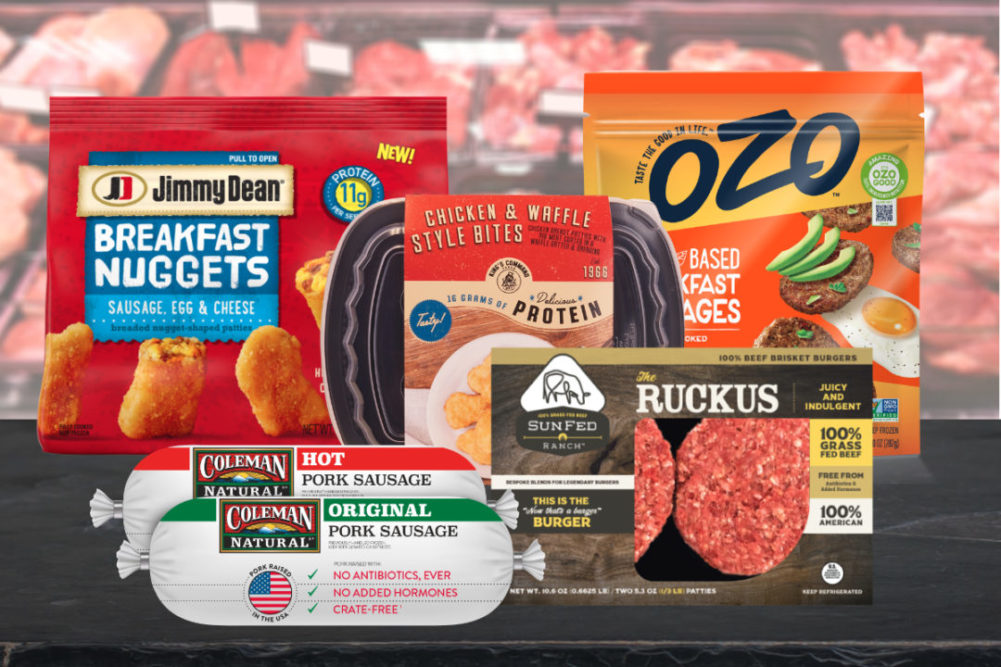KANSAS CITY, MO. — There’s a lot of talk about “a new normal” post-pandemic but no certainty of what that means. But what is certain is that meat will be part of it, because if the pandemic revealed anything it was the enduring popularity of meat and poultry among consumers, according to the 2021 Power of Meat consumer survey, which was revealed at the 2021 Annual Meat Conference, hosted by FMI – the Food Industry Association and the North American Meat Institute (NAMI). Innovation unveiled at the conference also confirmed this trend.
Currently in its 16th year, the Power of Meat, sponsored by Cryovac, a division of Sealed Air, and conducted by 210 Analytics, delves into the meat buying and consumption habits of consumers.
The meat department had strong sales in 2020 despite growth in flexitarian eating and a decline in the number of meat eaters during the pandemic, the report said.
Citing data from Information Resources Inc. (IRI), the report said, “Meat department sales reached $82.5 billion in 2020, an increase of 19.2%. Volume increased 11%. The sales increases were driven by more meat trips and a higher spend per trip, while maintaining very high household penetration, at 98.4%. Gen Z, millennials and Gen X all had above average contributions to growth.”
“The most profound change was in trips and baskets,” said Anne-Marie Roerink, principal at 210 Analytics. “Very early on we had a flurry of activity as people raced from store to store trying to fill their pantries, their freezers, their fridges. But right after that, we had a lot of trip pressure and that meant while people were in the store, they were buying a whole lot more each and every time, and that same pattern is lasting all the way into February this year.”
Beef especially had a strong showing in 2020. Roerink said beef recorded not only the highest dollars among proteins, but the category also saw the most growth.
“We don’t often see that happening to higher percentages,” she said, “but it’s incredible to see the industry pull together. Of course, we have to recognize the declines that happened in foodservice as well, but we certainly hope 2021 will be a better year for all of us.”
Keen for case-ready
Consumers’ perception of case-ready meats changed dramatically with favorability reaching a study high, according to the report.
“In 2008 when we first asked that question, we had quite a few folks wondering about the quality of case-ready, and they thought that meat cut in-store might be of better quality,” Roerink said. “But by 2020, case-ready favorability had advanced 70% over 2008, and the number of consumers who perceived case-ready was not as good declined almost 20%.
“This is moving to an 81% favorability, and that is an important message for our industry today.”
Meat dollars at home
With consumers cooking at home during the pandemic, 43% of shoppers bought more meat and poultry for lunch and dinner occasions. The increased demand during these dayparts was driven by the work-and-school-from-home trend, according to the report. Additionally, 4 in 10 shoppers bought differently because they were looking for better value, cooking more meals and making fewer store trips.
Shoppers continued to make the majority of their meat and poultry purchases at supermarkets although online shopping received a big pandemic boost, according to the study, with 56% of shoppers having purchased groceries online in 2020.
“Additionally, occasional online orders made way for steadier purchase patterns,” the report said. “Meat also landed in online baskets much more frequently, with 31% of all meat shoppers having ordered meat online, up from 19% the year prior. Fresh meat trails frozen in online purchases, with the exception of fresh chicken.”
Roerink noted that 29% of consumers have now bought meat online.
“We see not only more engagement, but we also see people buying more frequently,” she said. “IRI measured a 90% increase in meat e-commerce and now make up 10% of the total meat purchases.”
Among the key findings about online meat purchases mentioned in the study was that brands mattered more in the pandemic year with online ordering driving greater brand loyalty. In fresh meats, perceptions of taste and quality were drivers for consumer preference for manufacturer brands, the report stated.
“In fresh meats, 52% have preference for purchasing national or private brands,” the report said. “Brands are even more popular in processed meats, at 67%.”
Roerink said other factors of concern to consumers included confidence in food safety and consistency, and a company’s values regarding animal welfare and social responsibility concerns.
View slideshow of new products showcased at the 2021 Annual Meat Conference.


